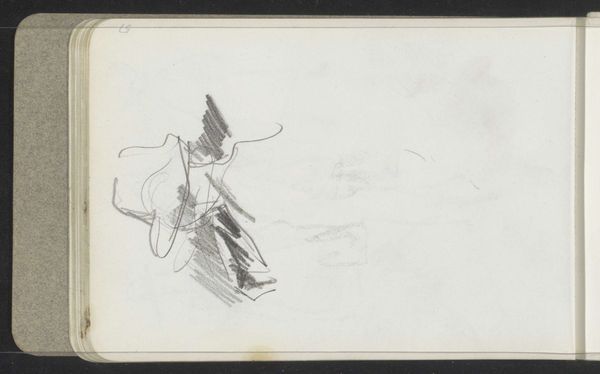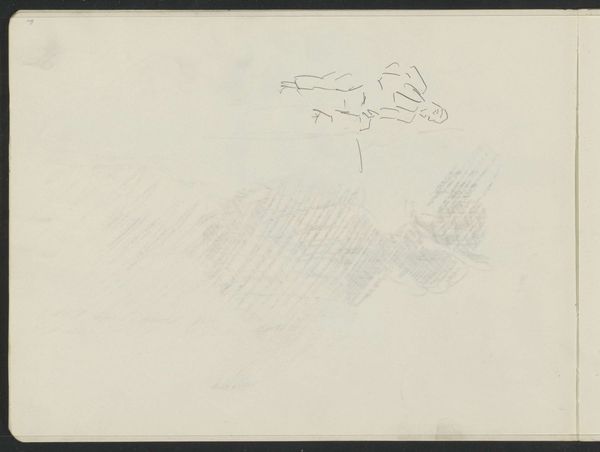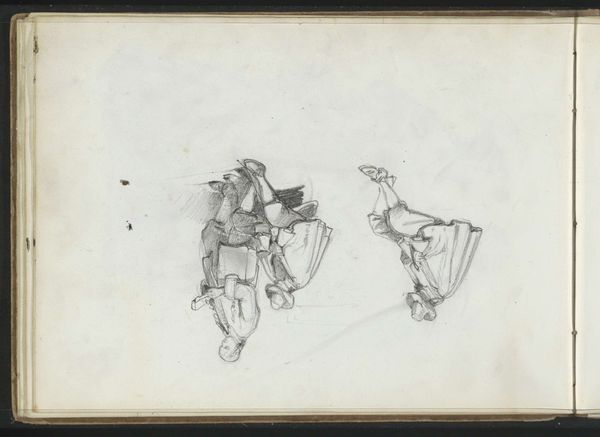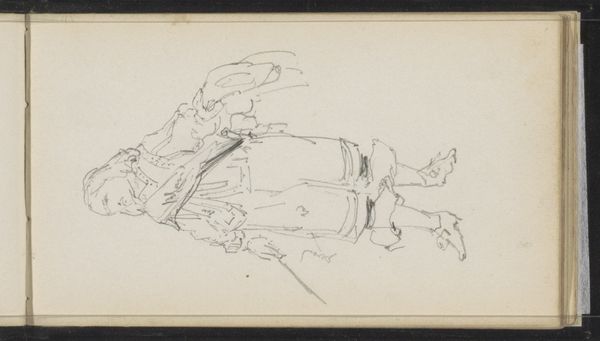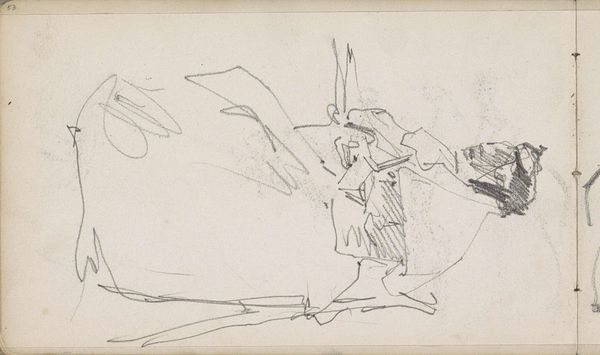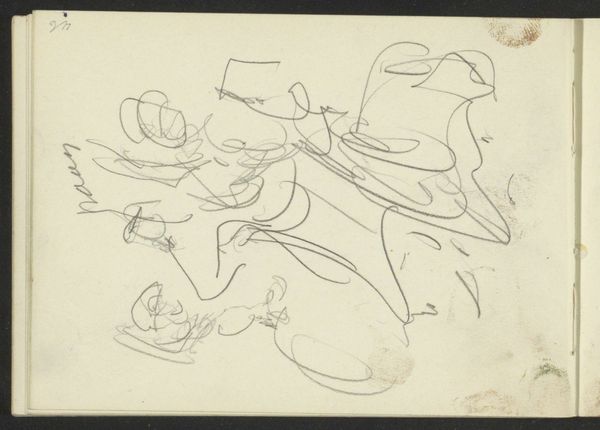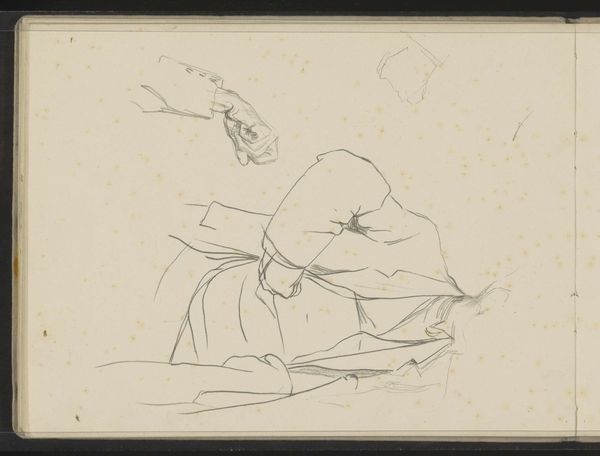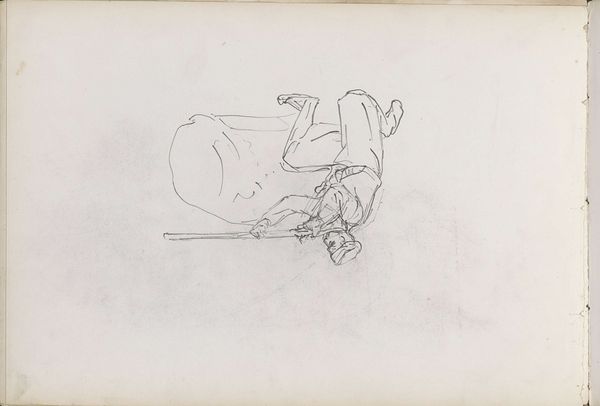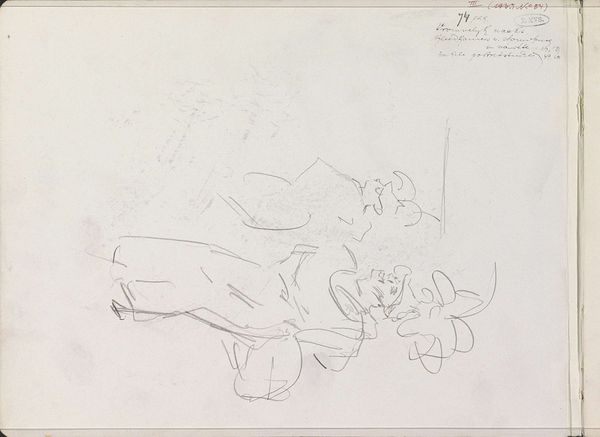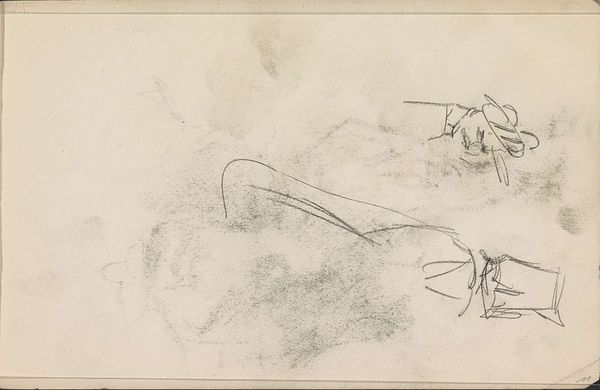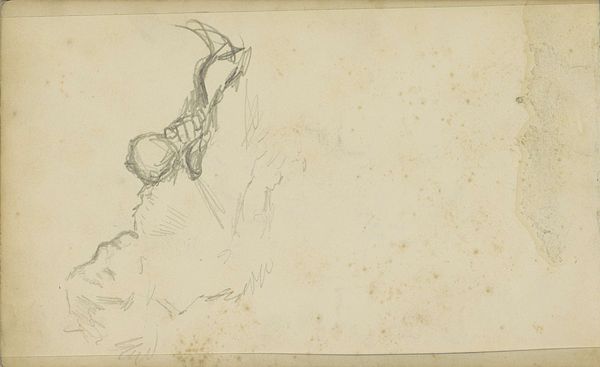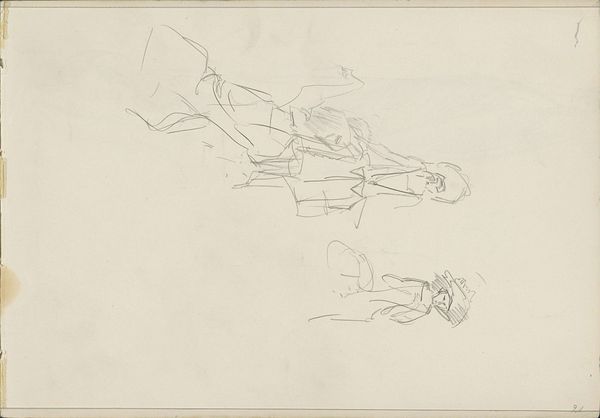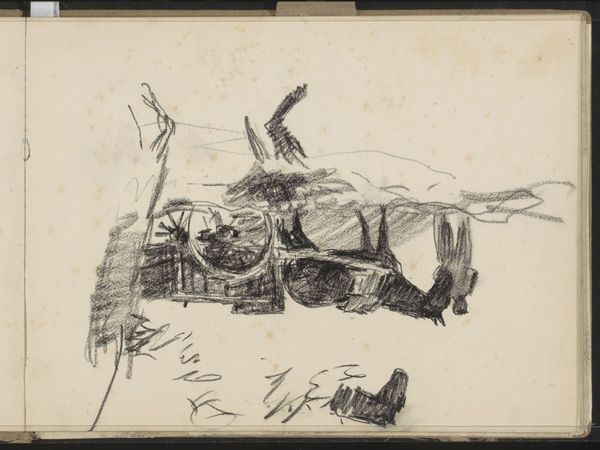
Copyright: Rijks Museum: Open Domain
Editor: Here we have Johannes Bosboom's "Boy with Hat and Dog," made sometime between 1827 and 1891, using pencil on paper. It feels very immediate, almost like a quick sketch capturing a fleeting moment. What stands out to you about this drawing? Curator: For me, it’s the visibility of the process itself. Look at the rapid, almost frantic, pencil strokes. This isn't about illusionism or polished presentation. It's about the act of seeing and recording. What kind of paper was available? What pencil grade did he favor? What can that tell us about the economics of art production at that time, and Bosboom's place within it? Editor: So, you're less interested in what he's depicting, and more in how he depicted it? Curator: Exactly! The 'what' is a boy and a dog, simple enough. But consider the labor involved. Was this a commission? A study for a larger work? How would the social class of Bosboom influence what he created? How readily can people obtain drawing materials? It is a drawing with limited lines; was there an intent behind saving material? That makes this so much more engaging, considering the materiality! Editor: I see what you mean. Thinking about it as a material object made within a specific system changes how I see it. Instead of just a sketch, it's a record of labor and material conditions. It also makes me consider what kind of market and audience Bosboom might have been imagining. Curator: Precisely! It urges us to rethink the canon, consider those unnamed, the assistants, the suppliers. To re-evaluate what's deemed "art" versus craft based on material usage, intent, and function rather than inherent quality. Editor: I never thought about pencil and paper having that kind of impact, so thank you, Curator. Curator: You're most welcome, it opens another facet in studying artwork like this, something worth revisiting.
Comments
No comments
Be the first to comment and join the conversation on the ultimate creative platform.
